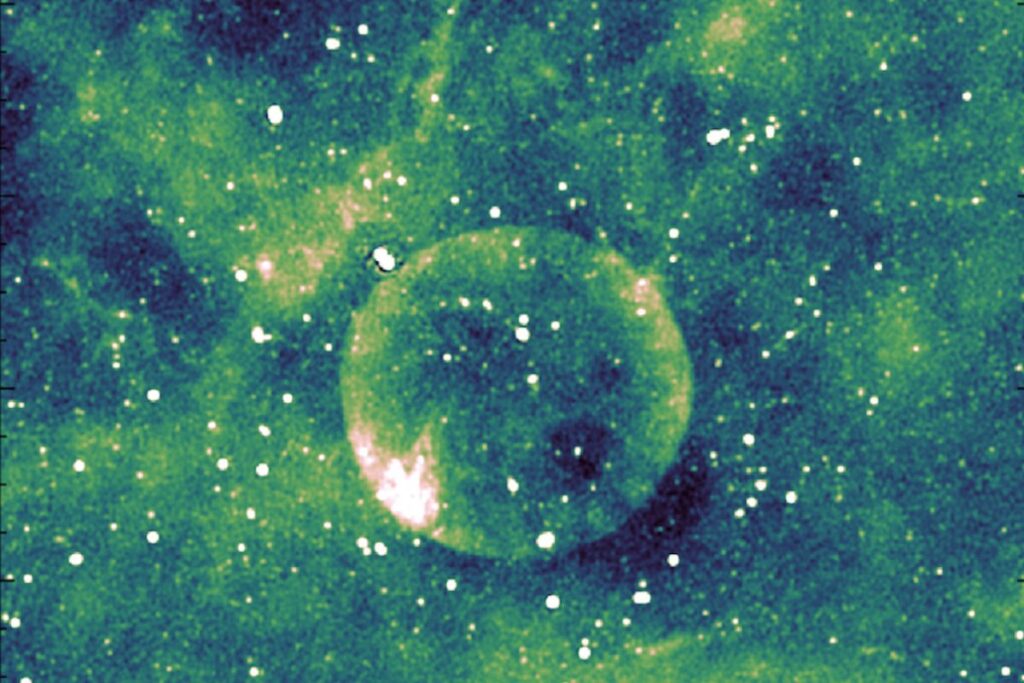Australia’s SKA Pathfinder Telescope has made a groundbreaking discovery of an almost perfectly spherical object in the Milky Way, named Teleos (G305.4-2.2). This unique bubble of plasma is primarily visible in the radio spectrum and exhibits no signs in visible, infrared, or X-ray wavelengths.
Unlike typical supernova remnants that appear irregular, Teleos measures over 95% in roundness and is considered the first “perfect radio circle” identified in the galaxy. Its faintness poses challenges for astronomers, who are uncertain about its distance from Earth—either 2,200 or 7,700 light-years—and its diameter, estimated at either 14 or 47 light-years. This uncertainty complicates dating the object, with theories suggesting it could be either a young or an old supernova remnant.
One prevailing hypothesis suggests Teleos results from a “late type IA supernova,” where the explosion of particular white dwarf stars might have created the spherical shape. However, the lack of accompanying X-rays and dense remnants like neutron stars or black holes raises questions about this origin. Furthermore, there are no historical records of a supernova in this region, implying that if the explosion was recent, it went unnoticed from Earth.
The upcoming full operation of Australia’s Square Kilometre Array telescope could provide deeper insights into this mysterious object and enhance observations of the cosmos.
Source link


